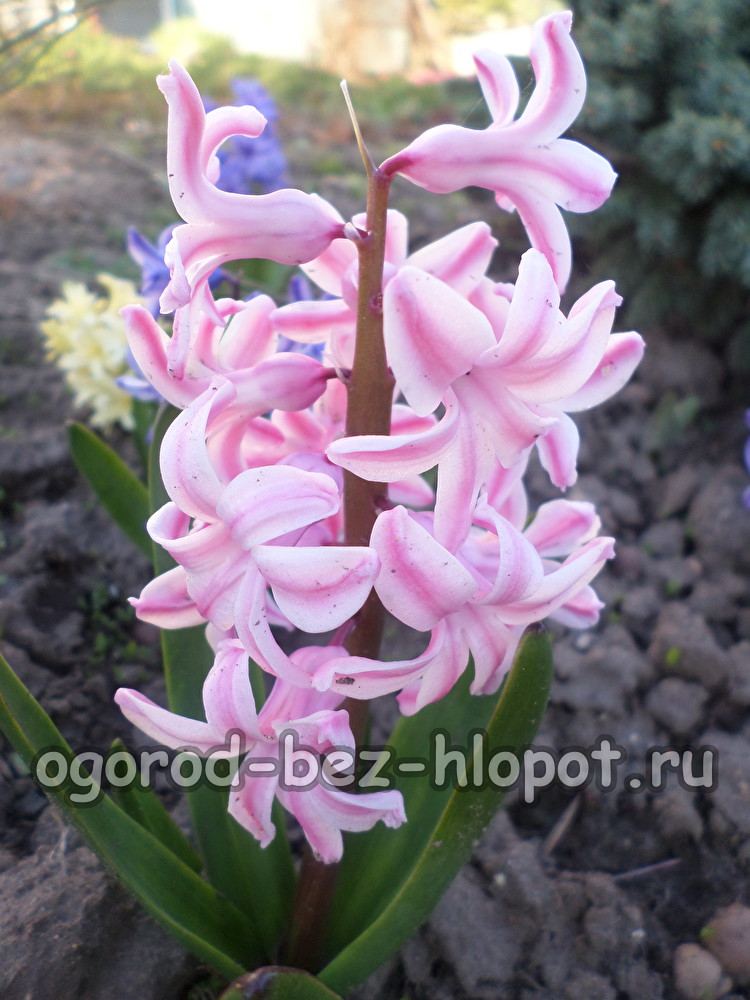 Hyacinths are among the first in the spring garden. These bulbous plants are quite common, have a wide range of shades of color inflorescences and look great in group plantings. But it is not always possible to achieve abundant flowering, dividing bulbs and a successful wintering. In order not to be disappointed in these beautiful, incredibly fragrant flowers, you should follow a few simple rules that experienced gardeners already know about.
Hyacinths are among the first in the spring garden. These bulbous plants are quite common, have a wide range of shades of color inflorescences and look great in group plantings. But it is not always possible to achieve abundant flowering, dividing bulbs and a successful wintering. In order not to be disappointed in these beautiful, incredibly fragrant flowers, you should follow a few simple rules that experienced gardeners already know about.
By the way, if you are passionate about lilies, we recommend that you read about planting and caring for lilies in the open ground.
Hyacinths - planting and care in the open ground in areas
Choosing the best place for planting flowers
It is believed that hyacinths are quite unpretentious. However, do not neglect the choice of soil for planting. It should not be too acidic soil. Neutral acidity is best. The bed for planting should be well lit and isolated from drafts. Do not grow hyacinths next to shrubs and trees, perennial garden flowers that do not need to be dug up annually. This is due to the fact that subsequently there may be problems with the extraction of bulbs from the soil for the summer period, and will also affect the growth and division of the bulbs.
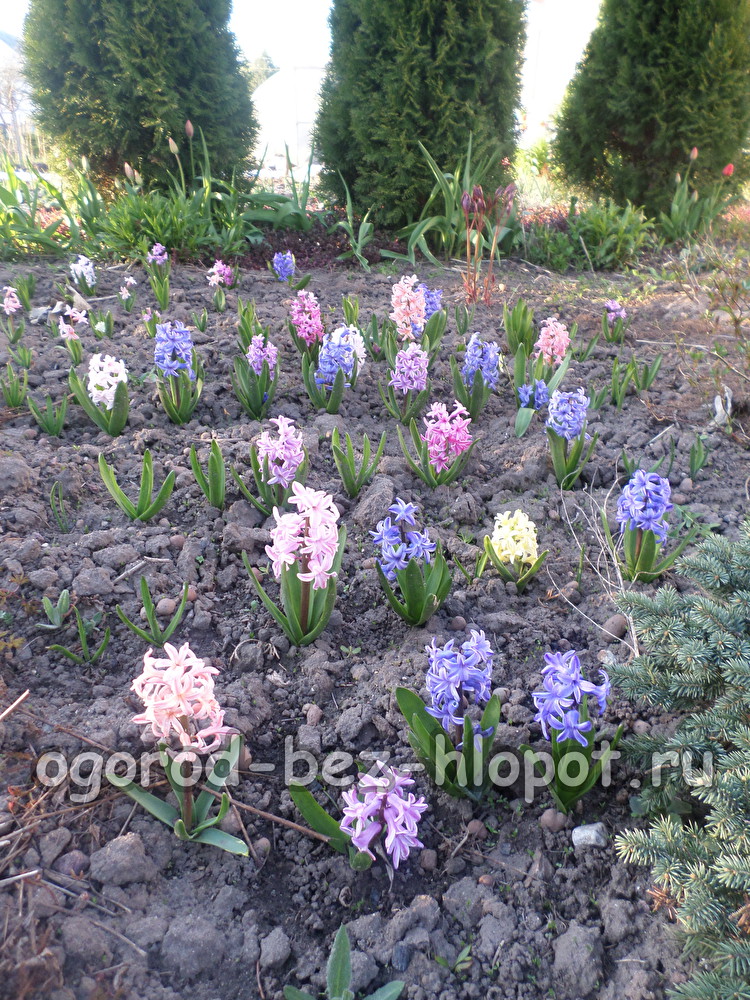
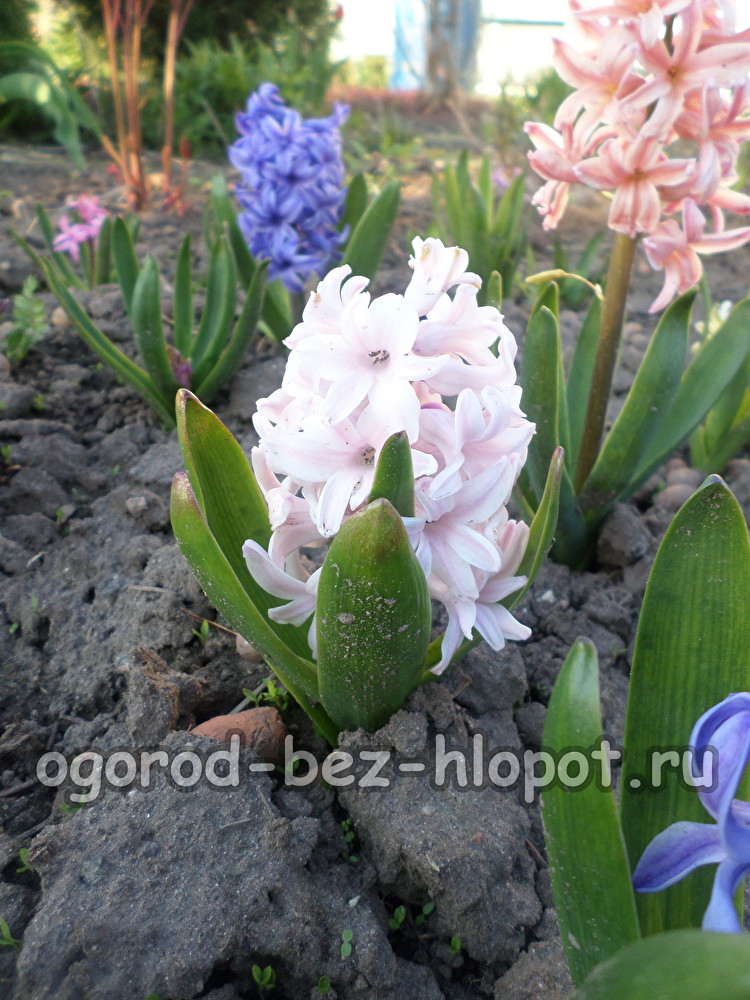
Preparation of soil for growing hyacinths
Ornamental plants require a sufficient amount of nutrients for full development. Hyacinths are no exception. Before planting, an open garden bed must be carefully dug up and fertilizer applied. Usually, the soil for these bulbs is prepared in 2-3 stages. Several times during the summer, loosening and applying organic fertilizers is performed. Immediately before planting, complex mineral fertilizers should be used. Hyacinths are planted in the ground around the beginning of October. It is best to focus on air temperature, which should not exceed 10 ° C. The depth of bulb placement should be at least 15 centimeters, and the recommended distance between plants should be at least 10 centimeters. It is worth noting that hyacinths are extremely hygrophilous. If the autumn turned out to be dry, do not forget to water the bed abundantly to ensure timely and normal rooting of the bulbs. After stable negative temperatures, it is recommended to cover the bed with hyacinths with fir branches. In the spring, after the snow melts, branches should be removed to avoid the debate of the bulbs and damage to the young shoots of the flower.
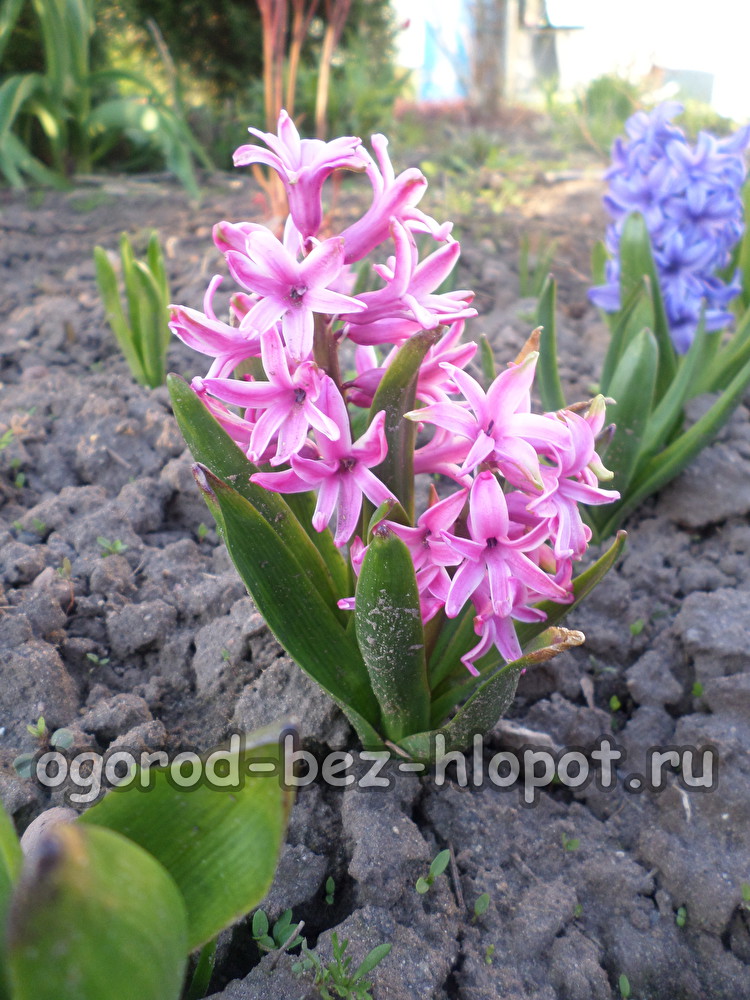
Nutrition and care during the period of active growth and flowering of hyacinths
After the appearance of the first sprouts, you need to carefully dig the earth around the plants and add urea at the rate of one tablespoon per bulb as a top dressing. After the formation of buds, it is necessary to carry out the second stage of feeding. To do this, it is best to use potassium sulfate, superphosphate, urea and Agricola. Prepare the solution, observing the recommended dosages on the packaging of fertilizer manufacturers. The approximate flow rate of the resulting liquid should be 5-6 liters per square meter. It is worth remembering that for the full development and long-term flowering of hyacinths, moisture is extremely necessary. Therefore, do not forget to loosen the earth around the plants and abundantly water the garden. After flowering is completed, it is necessary to remove all peduncles. This will ensure full ripening of the bulb, save energy for division.After the entire foliage of hyacinths has withered, they must be dug up, cleaned of the ground and put in a dark, ventilated room for drying.
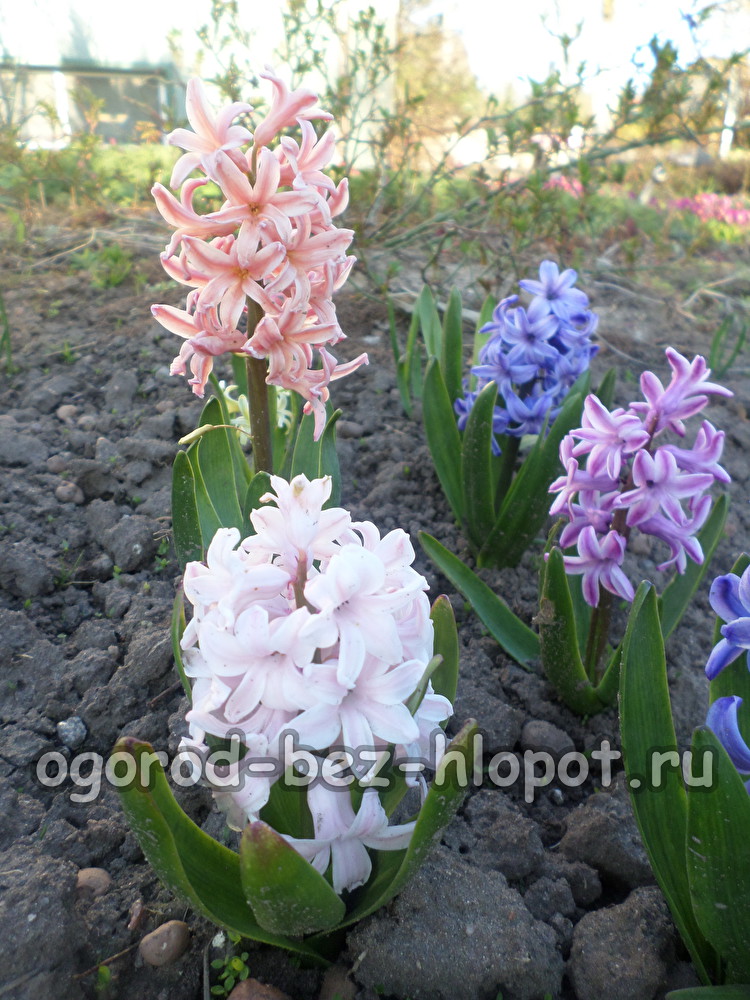
Hyacinth Bulb Care
Inspect the bulbs carefully after removing them from the ground. Do not store them in a humid place, at high temperature and in the sun. The main problem of the bulbs are various fungal and infectious diseases that can occur as a result of improper cultivation and storage. If mold or rot is detected on the bulbs, they must be treated with Fitosporin and Fundazole. The procedure should be repeated until the signs of damage are completely gone.
We recommend reading in more detail. on digging and storing hyacinth bulbs after flowering.
Since fungal and infectious diseases are active mainly in soil conditions, the garden on which the flowers grew should be treated with the same compounds. It is best to change the place for planting hyacinths in the event of such difficulties. To avoid diseases, do not forget that watering should be carried out exclusively under the bulb, avoiding moisture on the shoots. This is especially important when the plant is in a flowering state.
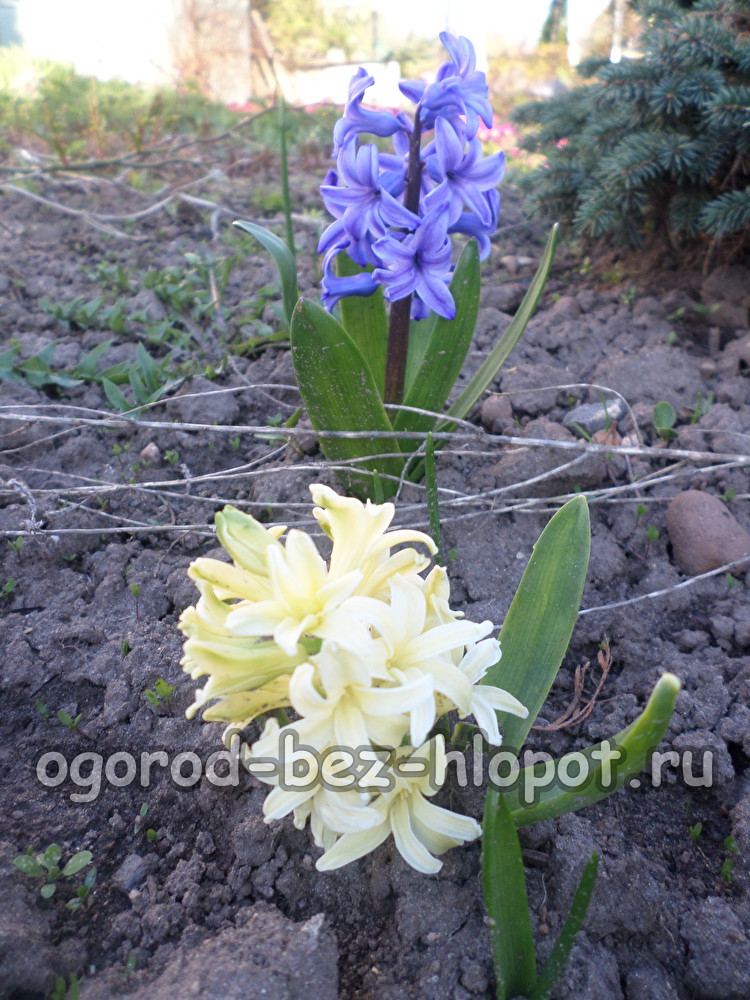
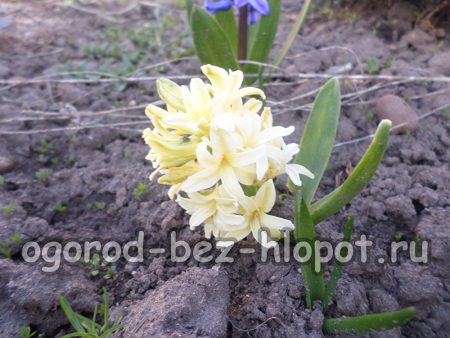
Now, knowing the rules for planting and caring for hyacinth in the open ground, you are sure to grow these flowers, which will decorate your garden.

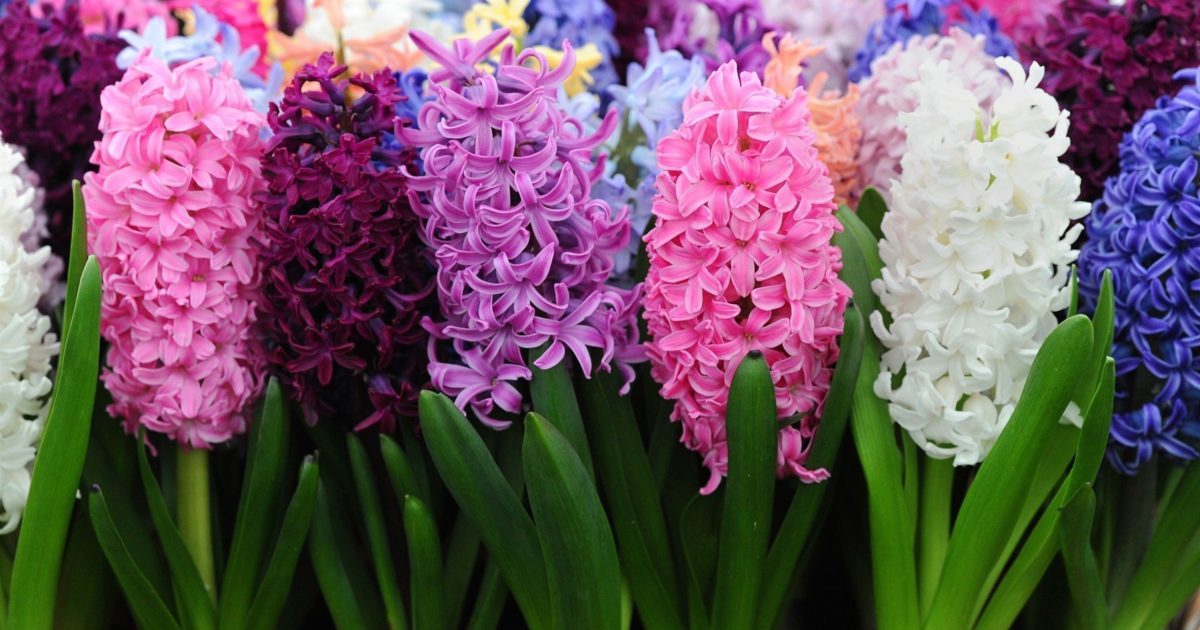
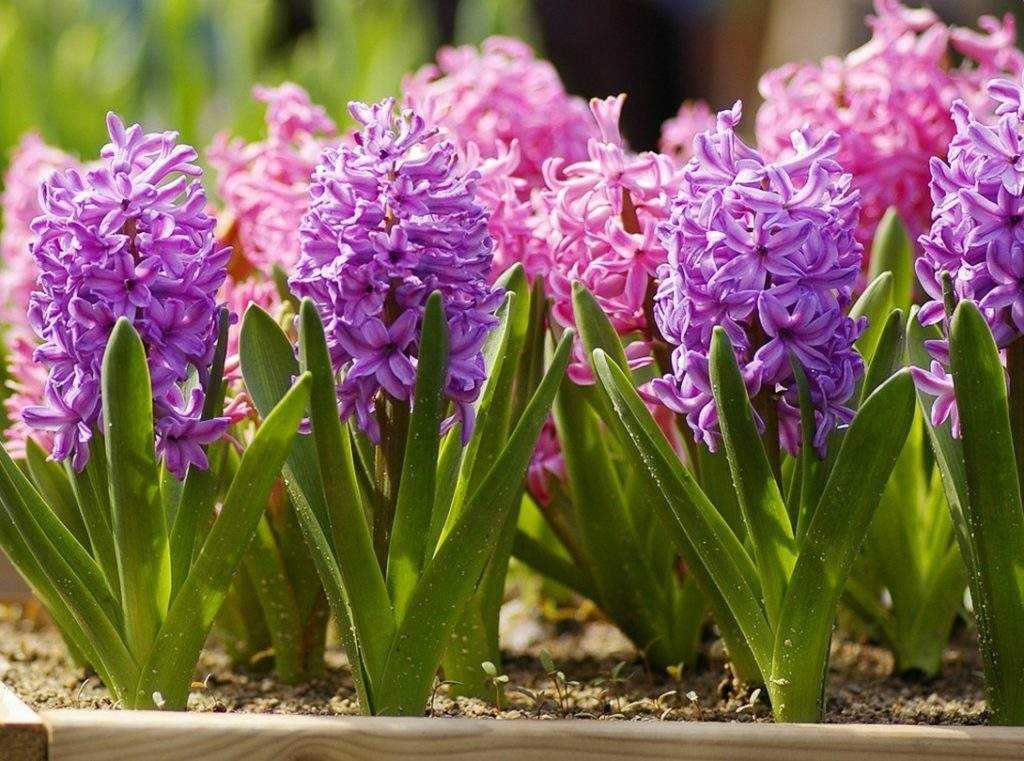
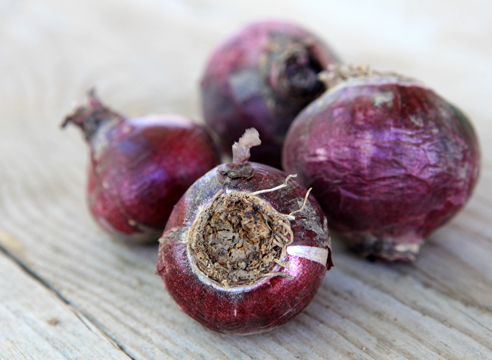 On digging and storing hyacinth bulbs after flowering
On digging and storing hyacinth bulbs after flowering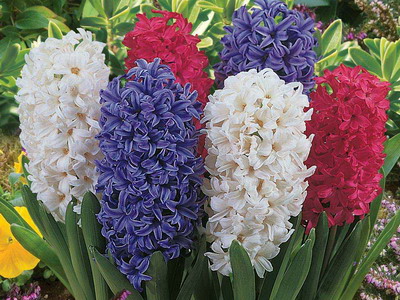 Planting hyacinth in open ground and caring for it
Planting hyacinth in open ground and caring for it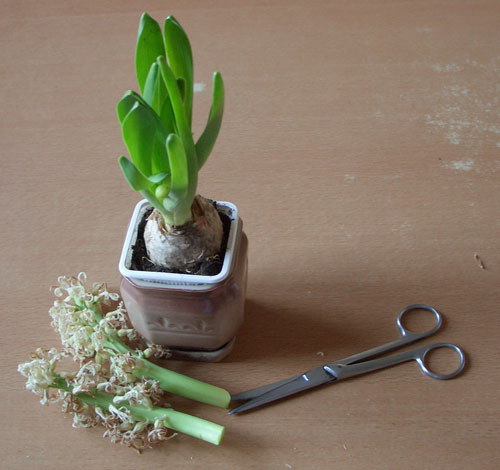 Hyacinth has faded: what to do with the bulb
Hyacinth has faded: what to do with the bulb
Natalie
My first experience in growing hyacinths was unsuccessful. I hoped for the unpretentiousness of the plant and eventually ruined all the bulbs. At the second attempt I fixed all my mistakes and got the result. The errors were as follows: for the winter, I dug bulbs and sent them to winter in the basement, and did not leave them to winter in the ground. After planting in the ground, I received only green leaves - there was no flowering. And even hyacinths I did not like sandy soil, growth and flowering was more active on black soil. In general, if you look, there is nothing complicated - a little attention and time and a flower bed of hyacinths will delight the eye with its juicy and bright blossoms for a long time. Good luck, gardeners!